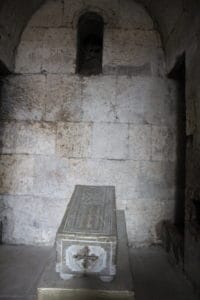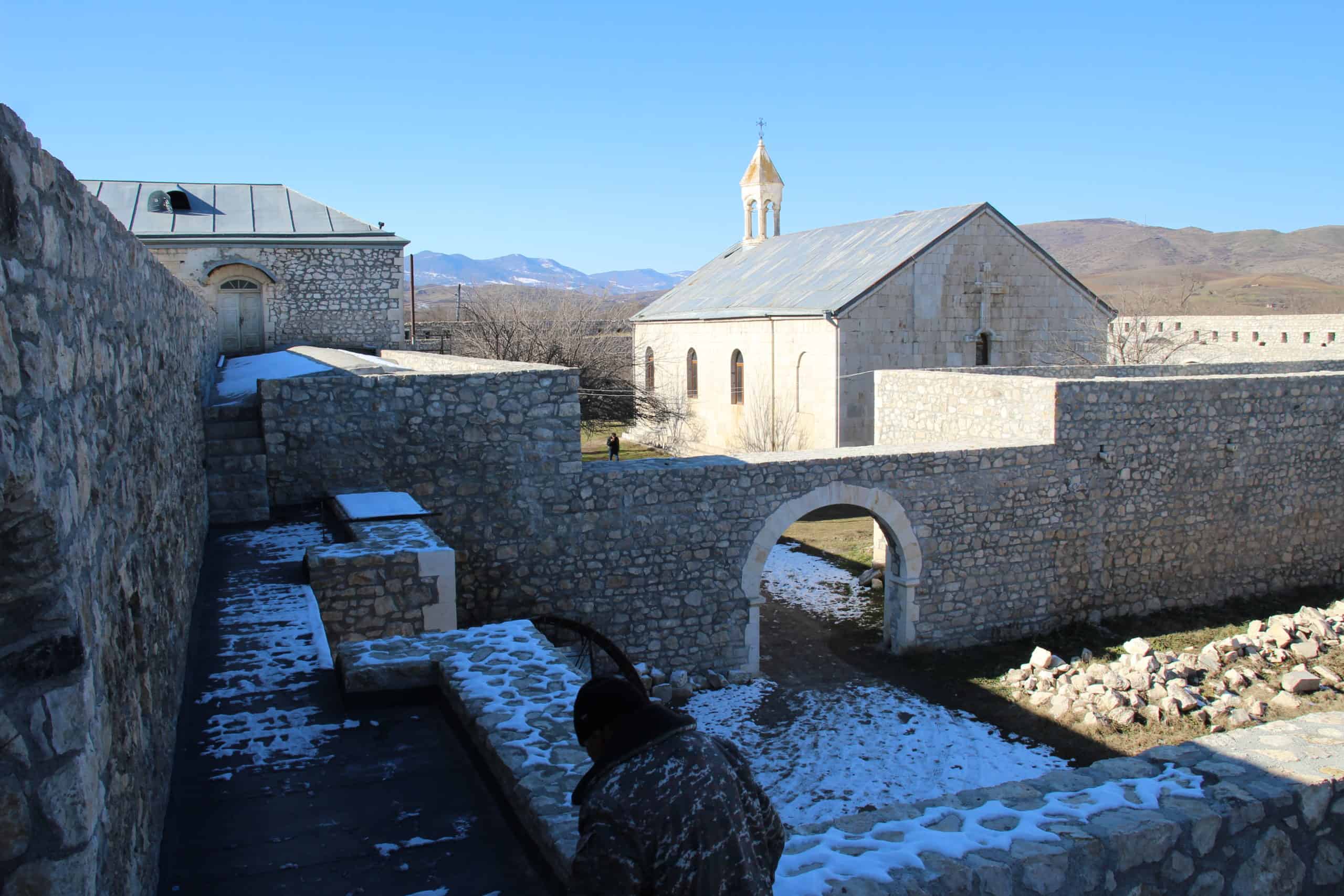From the very beginning, the Amaras Monastery has been on the frontline of nation-building and the defense of the Armenian identity. Indeed, it has been the holiest site since its birth, in the Marduni region of Artsakh, as its church was built in the 4th century by St. Gregory the Illuminator, the first head of the Armenian Church, under whom Armenia became the first Christian state in the world.

Exterior of the school founded by Mesrop Mashtots in the 5th century, the first one to be opened after he created the alphabet.
Bishop Grigoris, the grandson of St. Gregory, is also buried there, martyred during his evangelization in the Caucasus by Sanesan, king of the Massagetae, in the territory of what is now Daghestan. If we look back at this historical event, we may consider St. Grigoris a martyr of our nation in Artsakh. With their brutality, Sanesan and his forces can also be seen as the precursors of our modern day Azerbaijani enemy.
Amaras also represents a link with another key event in our history: the creation of the Armenian alphabet. It is here where Mesrop Mashtots founded the first school after his transcendental invention.

The tomb of St. Grigoris, grandson of St. Gregory the Illuminator.
Last Saturday, January 23, a correspondent of “Crossroads” visited the Amaras Monastery. In the ceiling of the still surviving classroom of Mashtots there is an almost unreadable but discernible inscription in large, capital letters. In the relative darkness, he was able to make out the “Գ” (G, in Eastern Armenian; K, in Western Armenian) and “Ա” (A).
Along with the monastery’s porter, Karlen Hovhannissian, he descended to the underground grave of St. Grigoris to say a prayer and then climbed the walls of the fortress surrounding the monastic complex, where today a big Russian flag is flying “so the Turks don’t target us,” Mr. Hovhannissian explained. Today Amaras is not only on the frontline metaphorically but also on the ground under the control of Armenian forces: the Azerbaijani positions are only miles away.
The pastor of Amaras, Fr. Geghard Hovhannissian, who was injured during the self-defense fighting in Artsakh in which he bravely took part as a volunteer in the spirit of Avarayr, is recovering in Yerevan. On the road to the monastery from Stepanakert, the correspondent of “Crossroads” saw convoys of Azerbaijani and Turkish trucks headed to the now occupied city of Shushi. It is in our hands to turn this tragedy into a victory and the enemy into a wind, like those who have passed through our mountains and now are nothing but dust.

